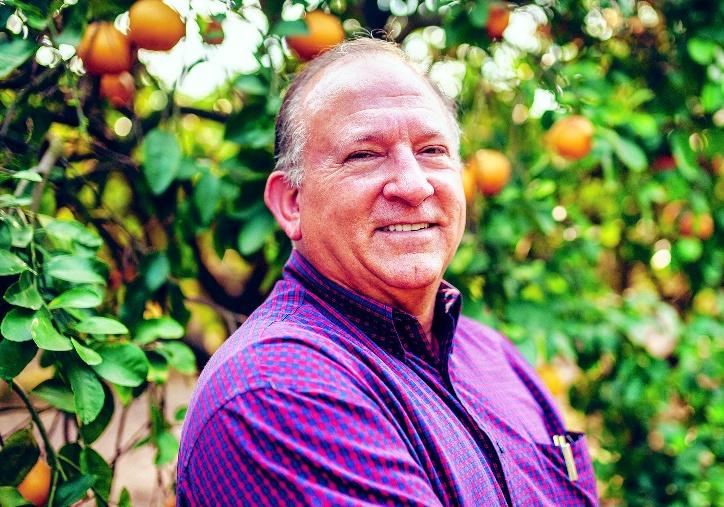
7 minute read
THE BITTER WITH THE
FEASTANDFIELD.NET 7
Dennis Holbrook is the president and owner of South Tex Organics, the largest organic citrus and vegetable grower in Texas, with more than 500 certified acres in operation.
Advertisement
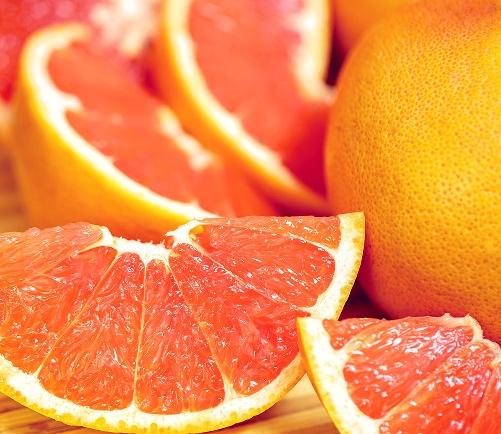
The bitter with the sweet: A grapefruit farmer’s organic journey BY NINA RANGEL PHOTOGRAPHY BY REBECCA BRITT
EDITOR’S NOTE
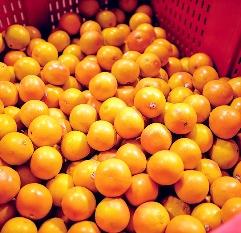
On a cloudy, damp day in March, the smell of wet earth and fermented fruit hangs thick in the air at South Tex Organics farm in Mission, Texas, as a layer of grapefruit rots on the grove floor. Acres of carefully tended plants dropped their fruit due to the freeze that had swept Texas a few weeks prior, blanketing the ground in plump orbs of sweet citrus now unfit for harvest and sale.
The unprecedented – and unpredictable – climate challenges associated with farming are an ongoing reality for those who dedicate their livelihood to the agricultural industry. For Dennis Holbrook, this is no exception.
One could say his journey as president and owner of Texas’ largest organic citrus and vegetable business has been in his cards since birth. Although his vision for the family business had always included exponential expansion, the rigorous additional effort required to provide organic certification is a relatively new aspect.
Humble beginnings
Dennis Holbrook’s parents visited Mission, Texas, for the first time in November 1954 and fell in love.
The couple settled down in Mission in 1955 and immediately began work in the Texas citrus business, purchasing a small number of their own groves as well as managing several acres for absentee landowners and investors.
Throughout young adulthood, Dennis Holbrook operated insecticide and herbicide spray rigs for the family business, eventually mixing the chemicals that went into spray application airplanes. In 1977, he purchased the grove-management company from his father and began to craft a path for himself in Mission.
Preemptive measures
For the next few years, Holbrook developed maintenance systems and purchased more land to grow the business. With each harvest, he began to notice that his properties were consuming more water.
Holbrook conducted tests on the soil, eventually concluding that the quality of the earth used in the company’s groves and fields had been all but depleted of beneficial organic matter. He began to research alternative growing methods that would replenish the soil without putting any groves out of commission.
Mother Nature’s influence
Converting from decades of chemical-assisted farming to organic growing methods is no small task. The certification process requires rigorous research, planning, record-keeping, inspections and assessments — not to mention a significant annual monetary investment.
Today, South Tex Organics is the largest organic citrus and vegetable grower in Texas, with more than 500 certified acres in operation. The farm grows primarily Rio Star grapefruit that features a blush peel with a deep red pulp seven to 10 times redder — and considerably sweeter — than the famous Ruby Red variety.
Wait and see
Holbrook believes in being a steward of the land, even in arguably one of the most tumultuous industries in existence.
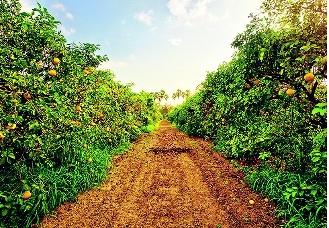
Before and after the freeze that hit South Tex Organics from February 13 to 17. After photo by Nina Rangel.
“Farming is a risky business,” he says. “We are literally the biggest gamblers there ever was, because so much of what we do is contingent on things we have no control over.”
The region’s citrus groves that occupy nearly 27,000 acres in and around Mission, Texas, currently bear the battle scars of the most unpredictable variable: weather. This year, winter ravaged the Lone Star State from February 13 to 17, hitting the area’s citrus crop with a financial loss greater than any other industry. Texas A&M AgriLife Extension Service economists estimate Texas citrus crop losses of at least $230 million as a direct result of the storm.
Fortunately, Holbrook says, South Tex Organics had seen consistent demand for the Rio Star fruits the farm is known for since the beginning of the season, and most of the farm’s haul had already been harvested by the time the storm blew in. Unbelievably, South Tex Organics lost less than 5% of their 2021 grapefruit harvest.
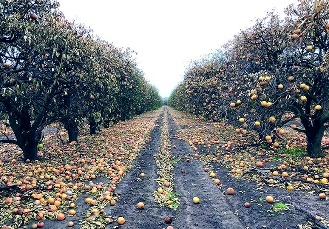
Freeze aftermath
One could say that standing between two groves in Mission — one operated by South Tex Organics, the other operated by another local farm that had been unable to harvest its fruit before the storm — is surreal. The tree canopies in both groves are brown and dry, leaves brittle to the touch. But in the grove to the left, a sea of orange covers the ground.
The majority of the South Tex Organics’ fruit might have escaped the storm, but acres of citrus groves remain devastated, in need of rehabilitation to remain productive for future seasons. Holbrook says it’s too early to tell how much damage has been done and that his team can only hedge the trees to remove the majority of the damaged limbs and foliage and then take a “wait-and-see approach.”
In the meantime, fields of red and white onions await harvest, bouncing back from the record temperatures in champion form. Holbrook learned how to cultivate the root vegetables as another source of income after a different big freeze — this time in 1989 — devastated a large portion of his citrus operation.
As a casual bystander, one can easily see the richness of the soil without even touching it, a comment that evokes a sense of pride from Holbrook. “As a farmer, I feel my responsibility is first to the land and second to the consumer,” he explains. “I have a responsibility to be a steward of the land, caring for it as best I can, so that we can continue to provide a food source to our consumers for years to come.”
AFTER THE DEVASTATING FREEZE that took hold of his crop, along with the rest of Texas, we reconnected with Holbrook for an update on the state of his groves as well as his business.
While pandemic-related health concerns and the growing demand for food high in vitamin C proved to be a positive for South Tex Organics this past year, Holbrook’s main worry remained for his employees, whose lives, as a result of the freeze, were somewhat uprooted.
“Because we can’t really do anything in our citrus groves until we see what the trees are going to manifest, there is not a lot going on,” Holbrook said. “Fortunately, we are a whole lot more optimistic about our crops than when the interview took place. But we have people out of work which is a challenge to figure out ways to support them.”
Still, Holbrook feels appreciative and continues to stay positive. He understands the devastation some of his fellow Texans have had to endure, a fortune he does not take lightly.
“Compared to those impacted by everything, I am grateful for our blessings.”
FAMILY TREE: AMERICA’S GREAT GRAPEFRUIT
BY ROSANNE TOROIAN • ILLUSTRATION BY HEATHER GRAY
It may seem strange to consider
a fruit’s lineage, but the grapefruit we know and love today is an interesting result of hundreds of years of evolution, careful breeding practices and, above all, organic accidents and serendipitous discoveries. Though similar, the different varieties that appear in our produce aisles today offer various flavors and applications.
Though generally interchangeable, white and pink or red grapefruit each have slightly different qualities best suited for certain applications in your recipes.
Here are a few popular varieties commonly found in grocery stores today, and inspiration for ways to incorporate the fruit in your sweet and savory creations. white grapefruit adds a subtle tang to both savory and sweet dishes, and its higher acidity lends itself to applications where a stronger grapefruit flavor is desired. Try white grapefruit in marinades, vinaigrettes, baked goods, ice cream and cocktails, or use the fruit in contrast to pink grapefruits and oranges in a citrus salad.

DUNCAN: White and very seedy,
this is the closest ancestor to the original grapefruit raised in Florida from the Caribbean. Today it is primarily used for juice and processed segments. a cross between a pomelo and a White Marsh grapefruit, these oversized grapefruit with thick rinds are sweet with low acidity.
Pink or Red Grapefruit
Pink grapefruits dominate the grapefruit section in most markets. Their irresistible pink hue adds a pop of color to any dish or drink. Though suitable for most recipes that call for grapefruit, think pink for fruit platters, salads and salsas, glazes and sauces, jams and marmalades, sorbets and granitas and any drink of choice including smoothies, nonalcoholic spritzers and cocktails.
THIS FAMILY TREE DEPICTS only a fraction of the dozens of grapefruit options cultivated and sold in stores and nurseries. Most varieties share common ancestors, and there are often indistinguishable differences between those in the pink and red branch of the family.
RUBY RED:
Though technically pink, the seedless Ruby Red is one of the oldest varieties grown in Texas. It may be the most popular in this category due its wide commercial availability, sweet-tart flavor and juicy flesh.









